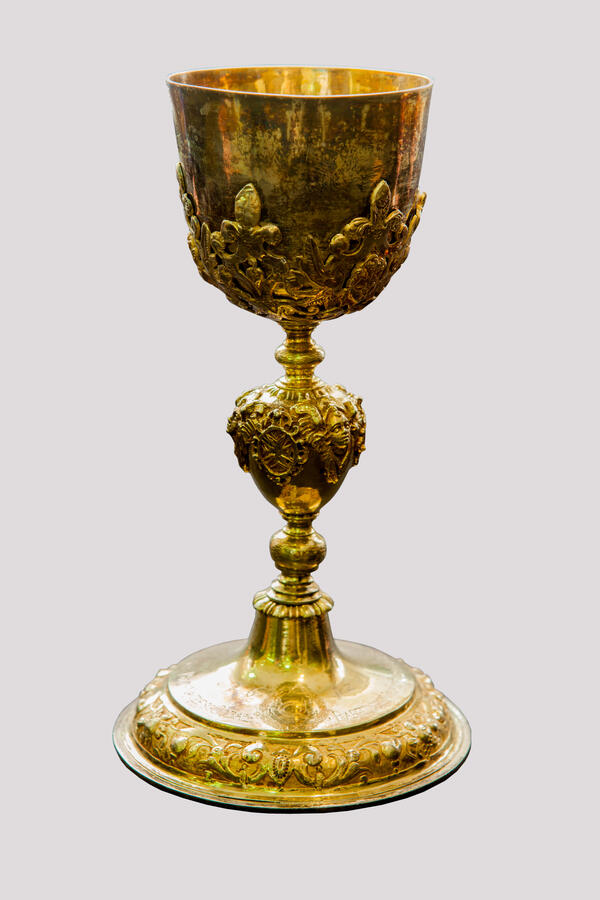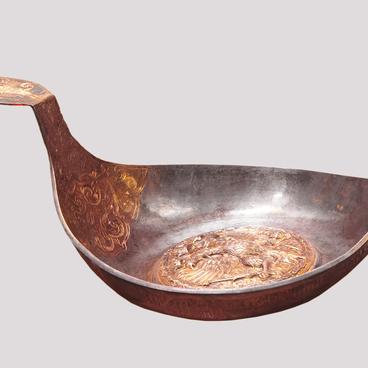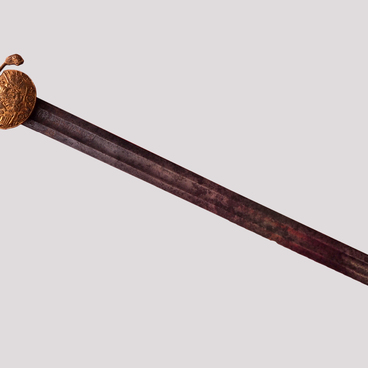Chalice is a footed bowl, which is used for Christian worship: at the consecration of wine and intinction. The first bowls were made of wood; around the 3rd century, glass chalices appeared. Since the 4th century, gold and silver chalices have become widespread.
The chalice from the Smolensk Museum collection is made of silver and decorated with floral designs. On the inside of the chalice platform there is a Russian inscription, made according to the rules of pre-revolutionary spelling: ‘Stolen by the Poles in Smolensk in 1611 and returned by the Chief of the North-West territory Mikhail Nikolaevich Muravyov in 1864 “.
From sources it is known that after the capture of Smolensk by the Poles on June 3, 1611, the city experienced terrible destruction and plundering. Karamzin, in his “History of the Russian State”, described the last hours of the city’s defense: ‘They fought for a long time in the ruins, on the walls, on the streets of the city with the sound of all bells and holy singing in churches… The Poles, overcoming everywhere, rushed to the main temple of the Mother of God, built by Monomakh where many of the townspeople have locked themselves. " Having learned that the city had fallen, citizens decided to destroy the powder cellars located next to the temple. A powerful explosion brought down the vaults of the cathedral, under which the last defenders were buried. Further, the historian writes: ‘From a terrible explosion, thunder and crackling, the enemy became numb, forgetting for a while his victory and with horror seeing the whole city on fire, into which the inhabitants threw everything that they had precious, and rushed themselves to leave only ashes to the enemy, and an example of virtue to the dear Fatherland… Not Poland, but Russia could triumph this day, great in its annals’.
According to the legend, the Polish officer Bartholomew Novodvorsky was one of the first to climb the Smolensk wall on June 3, 1611. Obviously, Novodvorsky, who distinguished himself in the capture of Smolensk, received several trophies, including a silver chalice from one of the Smolensk churches. On the outside of the chalice there is an engraving with an inscription in Polish, the translation of which reads: ‘Bartash Novodvorsky cavalier of Malta for the capture of Smolensk gave honor to God’.
250 years later, during the suppression of the Polish uprising of 1863-1864, the Smolensk chalice accidentally came to the attention of the Vilna Governor-General Muravyov, on whose orders he was returned to the Smolensk diocese.
The chalice from the Smolensk Museum collection is made of silver and decorated with floral designs. On the inside of the chalice platform there is a Russian inscription, made according to the rules of pre-revolutionary spelling: ‘Stolen by the Poles in Smolensk in 1611 and returned by the Chief of the North-West territory Mikhail Nikolaevich Muravyov in 1864 “.
From sources it is known that after the capture of Smolensk by the Poles on June 3, 1611, the city experienced terrible destruction and plundering. Karamzin, in his “History of the Russian State”, described the last hours of the city’s defense: ‘They fought for a long time in the ruins, on the walls, on the streets of the city with the sound of all bells and holy singing in churches… The Poles, overcoming everywhere, rushed to the main temple of the Mother of God, built by Monomakh where many of the townspeople have locked themselves. " Having learned that the city had fallen, citizens decided to destroy the powder cellars located next to the temple. A powerful explosion brought down the vaults of the cathedral, under which the last defenders were buried. Further, the historian writes: ‘From a terrible explosion, thunder and crackling, the enemy became numb, forgetting for a while his victory and with horror seeing the whole city on fire, into which the inhabitants threw everything that they had precious, and rushed themselves to leave only ashes to the enemy, and an example of virtue to the dear Fatherland… Not Poland, but Russia could triumph this day, great in its annals’.
According to the legend, the Polish officer Bartholomew Novodvorsky was one of the first to climb the Smolensk wall on June 3, 1611. Obviously, Novodvorsky, who distinguished himself in the capture of Smolensk, received several trophies, including a silver chalice from one of the Smolensk churches. On the outside of the chalice there is an engraving with an inscription in Polish, the translation of which reads: ‘Bartash Novodvorsky cavalier of Malta for the capture of Smolensk gave honor to God’.
250 years later, during the suppression of the Polish uprising of 1863-1864, the Smolensk chalice accidentally came to the attention of the Vilna Governor-General Muravyov, on whose orders he was returned to the Smolensk diocese.



